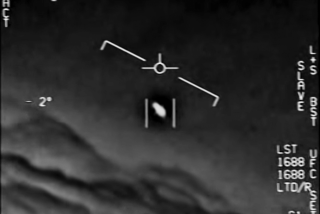Astrophysicist helped shape programs at NASA
- Share via
Astrophysicist Robert Jastrow, who played a key role in developing NASA’s program of lunar and solar system exploration but was much better known as a television commentator who explained space science in clear and understandable language, died Feb. 8 at his home in Arlington, Va., from complications of pneumonia. He was 82.
One of the first staffers at NASA, Jastrow was an early advocate of incorporating science into the fledgling space race, recruiting scientific talent and advocating forcefully for more experimentation.
As the founder and 20-year head of the Goddard Institute for Space Studies in New York, he oversaw planning for the Pioneer, Voyager and Galileo space probes, which returned the first good information about other planets in the solar system. The institute also played a key role in research on the use of satellites to study climate and weather on Earth.
Unlike many of his contemporaries, who thought scientists should remain secluded in their laboratories, Jastrow was a frequent guest on CBS and NBC during the missions to the moon, educating millions of Americans about orbital mechanics and the physics of spacecraft, as well as the history of the solar system.
He later hosted more than 100 programs for CBS explaining space and other scientific problems.
“He had a deep sense of the need to interpret science and make it available to the public,” said Johns Hopkins University planetary scientist Albert Arking, a former student of Jastrow. “His enthusiasm for science was infectious.”
Among the many books Jastrow wrote was the 1967 best-seller “Red Giants and White Dwarfs,” which explained why it was important to explore the solar system. He also wrote many articles about science for popular magazines. With his mother, he wrote two books about immigrant life in New York City.
His most controversial work was the 1985 book “How to Make Nuclear Weapons Obsolete,” in which he defended President Reagan’s Strategic Defense Initiative, commonly known as Star Wars. The heavily criticized book echoed the arguments of the initiative’s proponents in the administration without adding any new scientific basis for his support.
Robert Jastrow was born Sept. 7, 1925, in New York City. In high school, he developed an interest in biology and behavior after learning about the Skinner box, which uses electrical shocks and rewards to train rodents and other animals to perform specified tasks.
“And so I built my own Skinner box and nearly electrocuted a number of rats,” he recalled later.
When he enrolled at Columbia University, he went to see psychologist B.F. Skinner and offered his services. “ ‘That’s fine, delighted to have you, the first thing you have to do is learn calculus,’ ” he said Skinner told him. “So I registered in calculus, and I thought it was the most beautiful thing I would ever see. And that led me to register in turn for physics.”
He received his doctorate in physics in 1948 and, after five years of postdoctoral studies, became an instructor at Yale.
In 1958, he joined the U.S. Naval Research Laboratory in Washington, D.C., where he worked on the Vanguard Project, trying to find a quick and easy way to determine where satellites would come down when they reentered the atmosphere.
At the time, Soviet Premier Nikita Khrushchev was claiming that the rocket casing of Sputnik had come down in Alaska, that the U.S. had it and that he wanted it.
Jastrow went to a meeting in Moscow and, using the last radar sightings of the casing, showed that it had come down in an arc between Siberia and China.
That brought him to the attention of Homer Newell, who was helping to found NASA, and Newell recruited Jastrow to head its theoretical division.
In December 1958, Jastrow brought chemistry Nobel laureate Harold Urey to meet with Newell, and they made a persuasive case for NASA to build a strong lunar exploration program. The moon, Jastrow said, “was the Rosetta stone of the solar system. On the Earth, everything that has happened in the past has worn away. But the moon is geologically dead . . . and it preserves everything that has fallen on its surface throughout the history of the solar system.”
After his joint tenure at Goddard and Columbia, Jastrow was a member of the earth sciences department at Dartmouth College until 1992, when he became chairman of the board of trustees of the Mount Wilson Institute, which manages the Mount Wilson Observatory. He retired in 2003.
In 1984, Jastrow joined with Frederick Seitz and William Nierenberg to form the George C. Marshall Institute to conduct assessments of scientific issues affecting public policy. In this position, he expressed skepticism about the role of humans in global warming.
In his later years, he explored the idea of a creator of the universe or a first cause. “I’m an agnostic because I see the thrust of the discoveries toward the idea of a first cause, but everything else I know about humankind and the universe tells me that it could have happened without an overarching plan,” he said.
“And yet, when you step back and look at the whole picture, that seems hard to believe. So, as I’ve said in a number of places, I’m just stuck in the middle.”
Jastrow’s marriage to the former Ruth Witenberg ended in divorce, and he left no immediate survivors.
--
More to Read
Sign up for Essential California
The most important California stories and recommendations in your inbox every morning.
You may occasionally receive promotional content from the Los Angeles Times.











